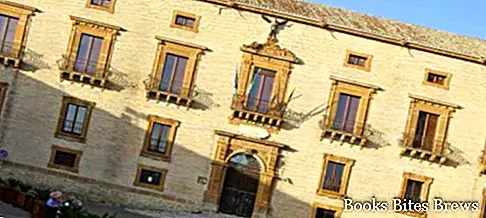What to see in Piazza Armerina, itinerary including the main monuments and places of interest, including Cathedral, Aragonese Castle, Palio dei Normanni and Villa Romana del Casale.
Tourist information
City of central Sicily, Piazza Armerina is located about 30 kilometers from Enna, in the hinterland of the Gulf of Gela in the southern Erei mountains, at an altitude of about 700 meters.
The city takes its name from Colle Armerino, one of the three hills on which it extends, surrounded by thick woods dominated by pine and eucalyptus trees.
The ancient settlement of Piazza Armerina was destroyed in 1161 by the Norman king William I, who ordered a harsh repression due to a baronial revolt against his court.
In 1163, rebuilt by William I himself, the city developed on the western slopes of Colle Mira, now called Monte, with the appearance of a real stronghold, a typical example of a Norman settlement.
In the medieval historic center of Piazza Armerina, at the top of the hill, stands the imposing seventeenth-century Cathedral, dedicated to the Blessed Virgin Mary of the Victories.
The Duomo, whose construction was started in 1627 by Orazio Torriani, dominates the whole town.
The imposing building includes a large Baroque façade, as well as a portal with twisted columns and a bell tower which, built for the pre-existing church, preserves the Catalan Gothic style in the lower part, in the upper part, from a later period, it shows instead a sixteenth-century appearance.
Inside, precisely in the chapel located to the left of the presbytery, there is a wonderful Crucifix by an unknown author, painted on a panel on both sides, in the back is the resurrected Christ.
On the main altar stands a Byzantine-style Madonna which is traditionally thought to have been donated in 1509 by Pope Nicholas II to Count Roger the Norman, as a wish for the liberation of Sicily from the Saracens.
At the center of the square, where the Cathedral overlooks, there are also Palazzo Trigona and the statue of Baron Marco Trigona, who financed the works for the construction of the cult building.
Recommended readings- Mazara del Vallo (Sicily): what to see
- Trapani (Sicily): what to see
- Randazzo (Sicily): what to see
- Milazzo (Sicily): what to see
- Sicily: Sunday day trips
What see
Via Monte starts from Piazza Duomo, from which the characteristic alleys that form the most evocative area of the city branch off in a herringbone pattern, including baroque churches, convents and falling noble palaces.
On Piazza Garibaldi, the heart of the ancient city, the elegant Palazzo di Città, seat of the town council of piazzese, and the Church of San Rocco, built in 1613 and assigned in 1622 to the Benedictines of the Abbey of Fundrò, stand out.
To the south-west of the medieval core of the city, on the southern slope of Colle Mira, stands the Aragonese Castle, built by King Martin I between 1392 and 1396.
Other things to see in Piazza Armerina are the baroque church of San Pietro and that of Sant'Andrea, where several frescoes dating back to an era between the twelfth and fourteenth centuries were found, now preserved in the National Gallery of Palermo.
About 5 kilometers from the center, in a wooded valley, is the Villa Romana del Casale, which with its splendid mosaics on the floor, constitutes the most prestigious Roman art site in Sicily, declared a UNESCO World Heritage Site and dating from the third and fourth centuries after Christ.
The villa, cleaned several times between 1930 and 1960 by the silt that during the XII century had submerged it and protected from the corrosion of atmospheric agents, presents itself as the largest Roman construction in Sicily and among the largest of ancient times.
Today the villa, devoid of the original cover, is protected by a plastic cover.
The floor mosaics inside the large villa of the Casale are of enormous importance.
In Piazza Armerina from 12 to 14 August each year the Palio dei Normanni is celebrated, a historical commemoration of the memorable achievements of the Norman Count Roger I, who freed the population from Saracen rule.
This event, which commemorates the entry into the city of Count Roger the Norman with the image of the Madonna preserved in the Cathedral, includes tournaments and competitions of costumed knights belonging to the city districts.
The winners will be given a banner depicting the image of Santa Maria delle Vittorie.
The feast in honor of Maria Santissima delle Vittorie takes place on August 15th.




